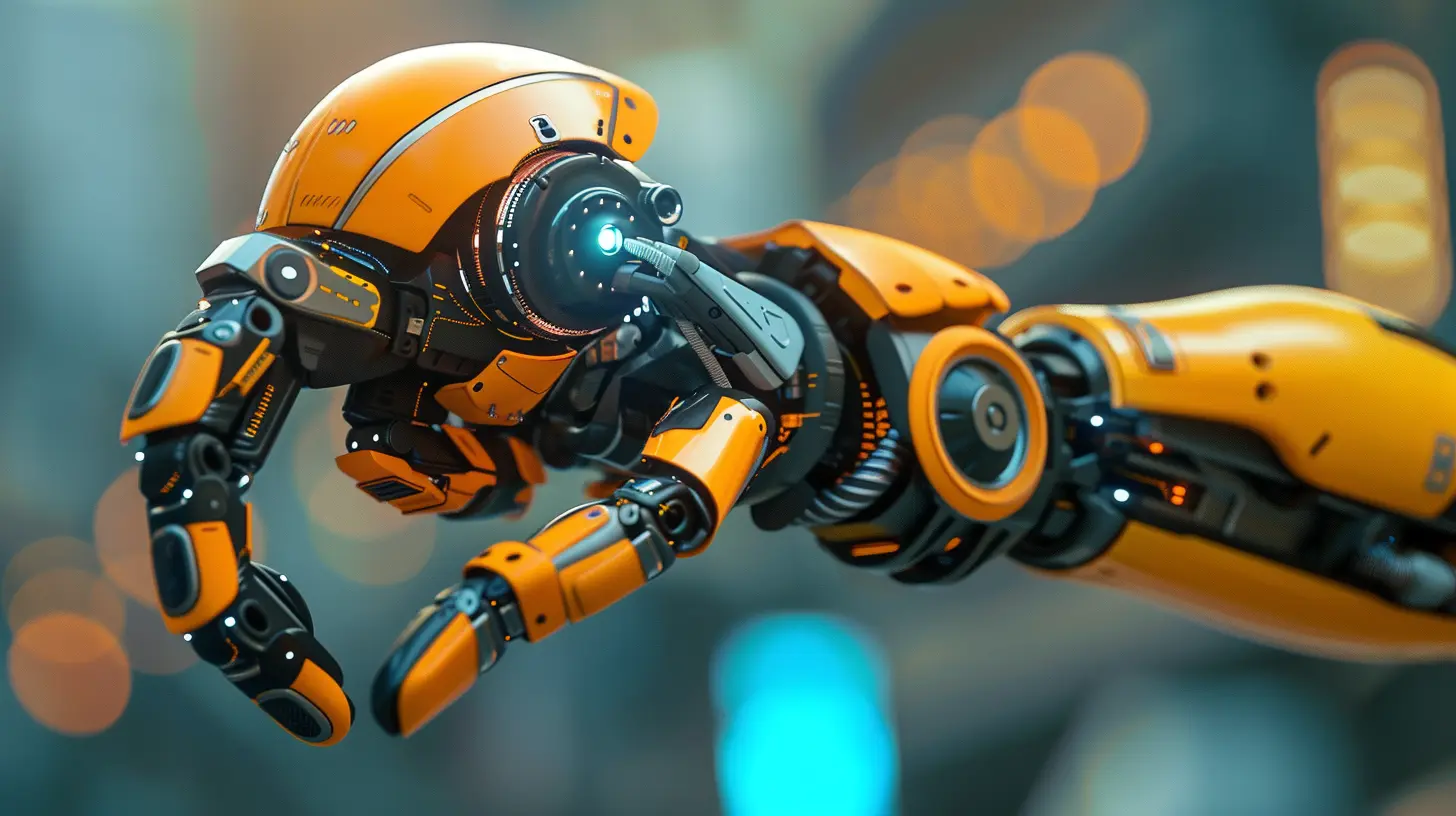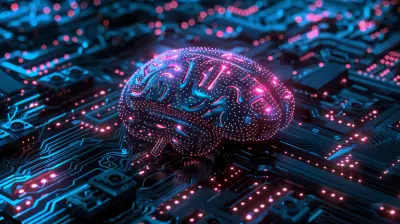Ethical AI Design: Building Systems That Reflect Human Values
27 July 2025
Artificial Intelligence (AI) is everywhere these days—our phones, our homes, our hospitals, our cars—you name it. It’s making our lives more efficient, streamlining processes, and even helping save lives. But here’s the million-dollar question: is AI being designed in a way that actually respects and reflects our human values?
It’s easy to get excited about the shiny tech stuff—algorithms, neural networks, machine learning models—but if we’re not careful, we risk building systems that are fast, smart, and totally misaligned with what we, as humans, believe is right and fair. That’s where ethical AI design steps into the spotlight.
So, let’s break this down in simple terms—what does ethical AI mean, and how can we make sure we’re building systems we can trust?

What Is Ethical AI Design Anyway?
Before we get into the nitty-gritty, let’s get one thing straight. Ethical AI design isn’t just about programming rules into a computer. It’s about embedding moral and societal values into the very fabric of AI systems.In short? It’s about making sure that technology doesn’t just run efficiently—it runs responsibly.
It means asking questions like:
- Is this system fair?
- Who does it benefit?
- Who could it harm?
- Is it biased in any way?
- Can we explain how it works?
Thinking like this takes the AI conversation out of the lab and into the real world—where actual people are affected.

Why Does Ethics Matter in AI?
Imagine you’re applying for a loan online, and an AI model is what decides if you’re approved. You’ve got a good credit score, solid income, and no debts. But boom—you get rejected. Why? You may never know.That’s the scary part. AI decisions, especially when made by complex black-box models, can feel like a magic trick—except your future might be the rabbit pulled from the hat.
When ethics are an afterthought, outcomes like bias, discrimination, and lack of accountability sneak in. Suddenly, we’re not talking about just bad code—we’re talking about real-world injustice.
Ethical AI design matters because it’s about people. Period.

Core Principles of Ethical AI Design
Now that we’ve seen the "why", let’s talk about the "how". Ethical AI is built on some key principles:1. Transparency
People should know how an AI system makes decisions. If you can’t explain it, you probably shouldn’t be using it to make life-changing calls.Transparency means:
- Explainable algorithms
- Clear documentation
- Open access to data sources (whenever possible)
2. Fairness
AI should treat people equally. It shouldn’t discriminate against someone because of their race, gender, age, or income.Fairness requires:
- Regular bias audits
- Diverse data sets
- Inclusion of marginalized voices in the design process
3. Accountability
Someone has to answer for the actions of an AI system. No passing the buck to a line of code.Accountability looks like:
- Legal frameworks
- Ethical boards or review committees
- Transparent chains of responsibility
4. Privacy
AI should protect people’s personal data like a vault. That means using only what’s needed, securing it properly, and asking for consent.Respecting privacy includes:
- Data minimization
- End-to-end encryption
- User-friendly explanations of data use
5. Human-Centered Design
AI should enhance human well-being, not replace it. This is about people first, tech second.Think:
- Empathy in design
- User feedback loops
- Systems that augment human strengths rather than replacing them

The Role of Cultural Values in Ethical AI
Here’s where things get a little tricky—human values aren’t universal. What’s considered fair in one culture might not be in another. That’s why designing ethical AI isn’t one-size-fits-all.Let’s say you're building an AI tutoring platform. In some cultures, collaboration might be encouraged, while others might reward individual performance. Whose values do you bake into the system?
This is where things like cultural sensitivity, local policies, and inclusive design come into play. Ethical AI must be flexible enough to adapt to global diversity while sticking to core human rights.
Real-World Examples: When AI Goes Wrong
Want to know what unethical AI looks like in the wild? Let’s talk case studies.Facial Recognition Woes
Several facial recognition systems have been found to misidentify people of color at much higher rates than white individuals. That’s not just an "oops"—that’s a product of biased training data and lack of diversity in development teams.Predictive Policing
AI systems used for predicting crime have reinforced existing racial biases in law enforcement. It’s like taking biased history and turning it into future decisions, making the cycle even worse.Hiring Algorithms
Some companies used AI to filter job applicants, only to later find the system favored male candidates and penalized others with gaps in their resumes. Again, biased data = biased AI.These examples show that AI isn’t inherently neutral. It learns from us—flaws and all. That’s why we’ve got to be extra careful about what we feed it and how we build it.
Building Ethical AI: Where Do We Start?
So how do we actually "do" ethical AI design? It’s not magic—but it does require intention, collaboration, and a strong moral compass.1. Start With Diverse Teams
Ethics begins with the people behind the code. If your team looks and thinks the same, chances are your AI system will too.More perspectives mean:
- Spotting blind spots early
- Understanding different user experiences
- Catching unfair outcomes before they go live
2. Use Ethics Checklists and Frameworks
Just like pilots use checklists before takeoff, AI teams should use ethical checklists before launching models. There are many out there, like Google’s AI Principles or the EU’s Ethics Guidelines for Trustworthy AI.These aren’t just box-ticking exercises—they’re lifelines to keep us grounded.
3. Include Ethics in the Development Lifecycle
Ethical reviews shouldn’t be a final step. They should be baked in from the start.From data collection to model training, to user testing—ethics should be part of every sprint, every iteration. Kind of like seatbelts in a car—you don’t just throw them in when you’re about to crash.
4. Be Transparent With Users
Let users know they’re interacting with AI. Give them choices. Explain how decisions are being made. Trust isn’t built with secrets—it’s built with honesty.5. Test Like Crazy
Before deploying any AI system, it should be stress-tested, bias-tested, and user-tested. Over and over again. You wouldn’t launch a plane without dozens of trial runs, right?Same deal with AI. The stakes are too high for reckless launches.
The Future of Ethical AI
We’re still early in the journey, and to be honest, there’s no final destination. Ethical AI isn’t something you "finish"—it’s a continuous process of learning, adapting, and growing.As tech advances, we’ll face new challenges: deepfakes, autonomous weapons, emotion-recognition systems, and more. Each step forward should come with an even stronger ethical guideline.
But here’s the beauty of it—we’re not powerless. We can shape the future of AI by demanding better, building smarter, and putting people first.
Final Thoughts: It’s Up to Us
At the end of the day, AI mirrors us. It reflects our data, our values, our decisions. So if we want AI to be fair, responsible, and ethical... it starts with us.This isn’t just about engineers and coders. Whether you’re a teacher, a parent, a student, or a CEO—your voice matters in shaping the AI conversation. Ask questions. Speak up. Push for change.
Because ethical AI isn’t just a tech issue—it’s a human one.
all images in this post were generated using AI tools
Category:
Ai EthicsAuthor:

Marcus Gray
Discussion
rate this article
1 comments
Danica Nguyen
This article on ethical AI design is crucial in today's tech landscape. By prioritizing human values, we can create systems that not only function effectively but also enhance societal well-being. It's vital for developers to embrace these principles to ensure technology benefits everyone equitably.
August 18, 2025 at 5:03 AM

Marcus Gray
Thank you for your thoughtful comment! I completely agree—prioritizing human values in AI design is essential for creating equitable and beneficial technology.


